Potřebujeme váš souhlas k využití jednotlivých dat, aby se vám mimo jiné mohly ukazovat informace týkající se vašich zájmů. Souhlas udělíte kliknutím na tlačítko „OK“.
ASTM D7686-11
Standard Test Method for Field-Based Condition Monitoring of Soot in In-Service Lubricants Using a Fixed-Filter Infrared (IR) Instrument
Automaticky přeložený název:
Standardní zkušební metoda pro terénní sledování stavu sazí v In-Service Lubricants pomocí pevného-filtru (IR) nástroje
NORMA vydána dne 15.6.2011
Informace o normě:
Označení normy: ASTM D7686-11
Poznámka: NEPLATNÁ
Datum vydání normy: 15.6.2011
Kód zboží: NS-38957
Počet stran: 5
Přibližná hmotnost: 15 g (0.03 liber)
Země: Americká technická norma
Kategorie: Technické normy ASTM
Kategorie - podobné normy:
Anotace textu normy ASTM D7686-11 :
Keywords:
condition monitoring, diesel engine oil, hydrocarbon-based lubricants, infrared, in-service petroleum lubricants, IR, lubricants, oils, soot, ICS Number Code 75.100 (Lubricants, industrial oils and related products)
Doplňující informace
| Significance and Use | ||||||||||
|
This test method provides a simple field-based technique for condition monitoring of soot in in-service lubricants associated with combustion engines, machinery, and equipment used in industry and by the military. Critical applications should use laboratory based test methods, such as Thermal Gravimetric Analysis (TGA) described in Test Method D5967, Annex A4. Infrared spectroscopy is a well established laboratory method for evaluating soot levels in lubricants. This test method can be used to monitor soot build-up in lubricants and can indicate whether soot has accumulated to an extent which could significantly degrade the performance of the oil. High soot content can compromise lubricant performance and cause filter and oil passage blockage. Soot concentration should be considered in conjunction with data from other condition monitoring tests as described in Practice E2412 to determine whether the oil should be replaced to minimize machinery wear or failure, or both. |
||||||||||
| 1. Scope | ||||||||||
|
1.1 This test method pertains to field-based monitoring of soot in diesel crankcase engine oils as well as in other types of engine oils where soot may contaminate the lubricant as a result of a blow-by due to incomplete combustion of fuels. It is applicable to oils having soot levels of up to 12%. 1.2 This test method uses filter-based infrared technology for monitoring of soot build-up in in-service petroleum and hydrocarbon-based lubricants as a result of normal machinery operation. Soot levels in engine oils rise as soot particles contaminate the oil as a result of exhaust gas recirculation from blow-by. This test method is designed as a fast, simple and field capable spectroscopic check for soot in in-service hydrocarbon-based lubricants with the objective of helping diagnose the operational condition of the machine based on measuring the level of soot in the oil. 1.3 This test method is intended as a field test only, and should be treated as such. Critical applications should use laboratory based methods, such as Thermal Gravimetric Analysis (TGA) described in Test Method D5967, Annex A4. 1.4 Acquisition of spectral data for measuring soot in in-service oil and lubricant samples with the use of a fixed-filter IR instrument is described in this test method. Calibration against prepared soot standards is also described. Note 1—It is not the intent of this test method to establish or recommend normal, cautionary, warning or alert limits for any machinery. Such limits should be established in conjunction with advice and guidance from the machinery manufacturer and maintenance group. 1.5 The values stated in SI units are to be regarded as standard. No other units of measurement are included in this standard. 1.6 This standard does not purport to address all of the safety concerns, if any, associated with its use. It is the responsibility of the user of this standard to establish appropriate safety and health practices and determine the applicability of regulatory limitations prior to use. |
||||||||||
| 2. Referenced Documents | ||||||||||
|
Podobné normy:
Historická
1.5.2010
Historická
1.10.2013
Historická
1.10.2011
Historická
15.4.2012
Historická
1.5.2014
Historická
15.4.2009
Doporučujeme:
Aktualizace technických norem
Chcete mít jistotu, že používáte pouze platné technické normy?
Nabízíme Vám řešení, které Vám zajistí měsíční přehled o aktuálnosti norem, které používáte.
Chcete vědět více informací? Podívejte se na tuto stránku.


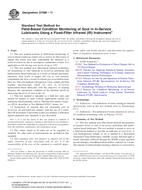
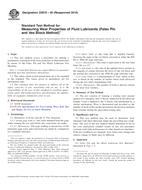 ASTM D2670-95(2010)..
ASTM D2670-95(2010)..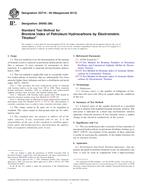 ASTM D2710-09(2013)..
ASTM D2710-09(2013).. ASTM D2711-11
ASTM D2711-11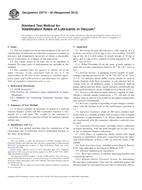 ASTM D2715-92(2012)..
ASTM D2715-92(2012)..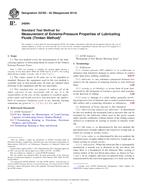 ASTM D2782-02(2014)..
ASTM D2782-02(2014)..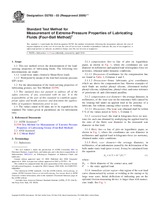 ASTM D2783-03(2009)e..
ASTM D2783-03(2009)e..
 Cookies
Cookies
